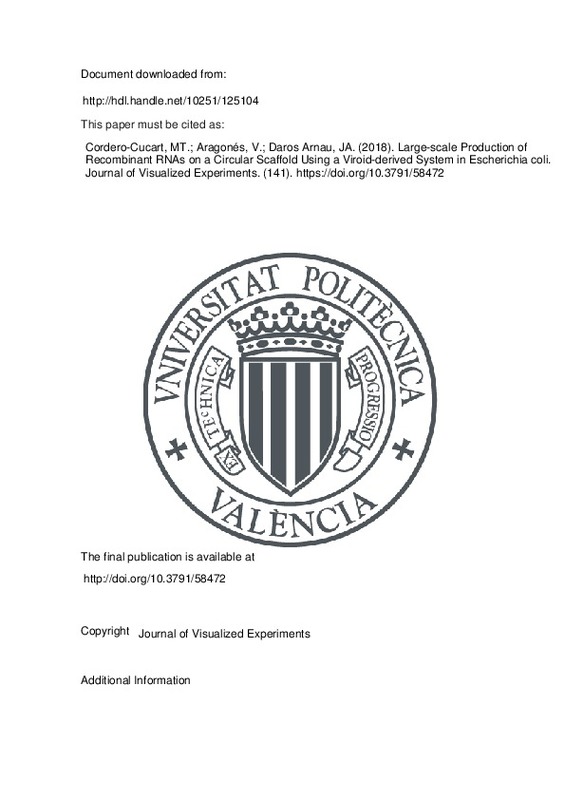JavaScript is disabled for your browser. Some features of this site may not work without it.
Buscar en RiuNet
Listar
Mi cuenta
Estadísticas
Ayuda RiuNet
Admin. UPV
Large-scale Production of Recombinant RNAs on a Circular Scaffold Using a Viroid-derived System in Escherichia coli
Mostrar el registro completo del ítem
Cordero-Cucart, MT.; Aragonés, V.; Daros Arnau, JA. (2018). Large-scale Production of Recombinant RNAs on a Circular Scaffold Using a Viroid-derived System in Escherichia coli. Journal of Visualized Experiments. (141). https://doi.org/10.3791/58472
Por favor, use este identificador para citar o enlazar este ítem: http://hdl.handle.net/10251/125104
Ficheros en el ítem
Metadatos del ítem
| Título: | Large-scale Production of Recombinant RNAs on a Circular Scaffold Using a Viroid-derived System in Escherichia coli | |
| Autor: | Cordero-Cucart, María Teresa Aragonés, V. | |
| Entidad UPV: |
|
|
| Fecha difusión: |
|
|
| Resumen: |
[EN] With increasing interest in RNA biology and the use of RNA molecules in sophisticated biotechnological applications, the methods to produce large amounts of recombinant RNAs are limited. Here, we describe a protocol ...[+]
|
|
| Palabras clave: |
|
|
| Derechos de uso: | Reserva de todos los derechos | |
| Fuente: |
|
|
| DOI: |
|
|
| Editorial: |
|
|
| Versión del editor: | http://doi.org/10.3791/58472 | |
| Código del Proyecto: |
|
|
| Agradecimientos: |
|
|
| Tipo: |
|







![[Cerrado]](/themes/UPV/images/candado.png)


